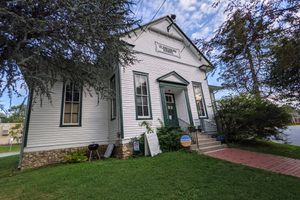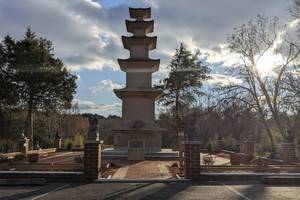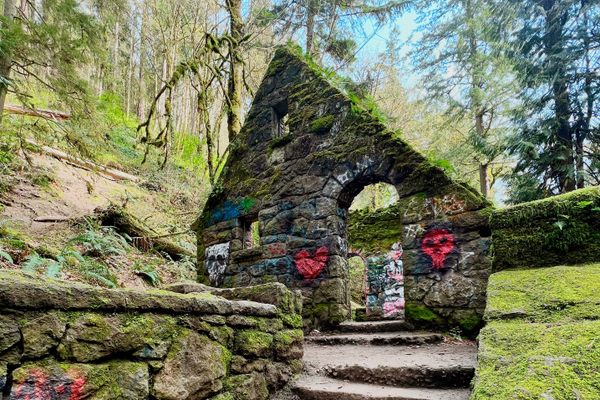About
On land originally known as the William and Mary Tract, Zachariah Waters built a saw and grist mill some time around 1810. The mill processed grain, lumber, and linseed oil made from pressed flax seed.
While the mill stopped operating around 1895, an interesting piece of local history explains the demise of the miller's house, which are now separate ruins that are located where the Hard Rock Trail crosses Lake Ridge Road less than half a mile away.
The year was 1920. A man named John Bolton resided in the miller's house from the old Waters' Mill at the time. He was visited by a man named Guy Vernon Thompson, who showed up under the auspices of trying to convince Bolton to vote in an upcoming election.
Bolton refused to let him in, but Thompson continued to pound on the door. Bolton eventually opened the door brandishing a shotgun, which discharged during a scuffle, injuring Thompson's shoulder.
Thompson returned at a later time armed with dynamite, which he had stolen from Waters General Store. He detonated the explosives inside of Bolton's home, killing Bolton and his housekeeper Hattie's two young children, Harold and Evelyn. Harold was killed by the blast. Evelyn succumbed to her injuries that night. Bolton passed the following day from internal injuries.
Hattie was wounded, but survived the attack. The next morning, she made her way to a neighboring farm.
Thompson was convicted of his crimes in January of 1921 based on evidence found at the general store and Bolton's home, along with testimony from Hattie, and Thompson's wife, Hester, who recounted that he brought the dynamite home late on the night of the fatal event before going back out.
Thompson was hanged shortly thereafter at the county jail yard and had the ignominious distinction of being the last man hanged in Montgomery County.
Related Tags
Know Before You Go
The Mill Ruins can be found by walking down the Black Hill Hiker Biker Trail which lies between 13660 and 13663 on Spinning Wheel Drive. Follow the trail past Crystal Rock Trail (which juts off to the right) and over the bridge that spans Little Seneca Creek. A historical marker stands just beyond the bridge on the left, and the ruins of the mill can be seen from the path at the bottom of the ravine.
Community Contributors
Added By
Published
January 7, 2022

























